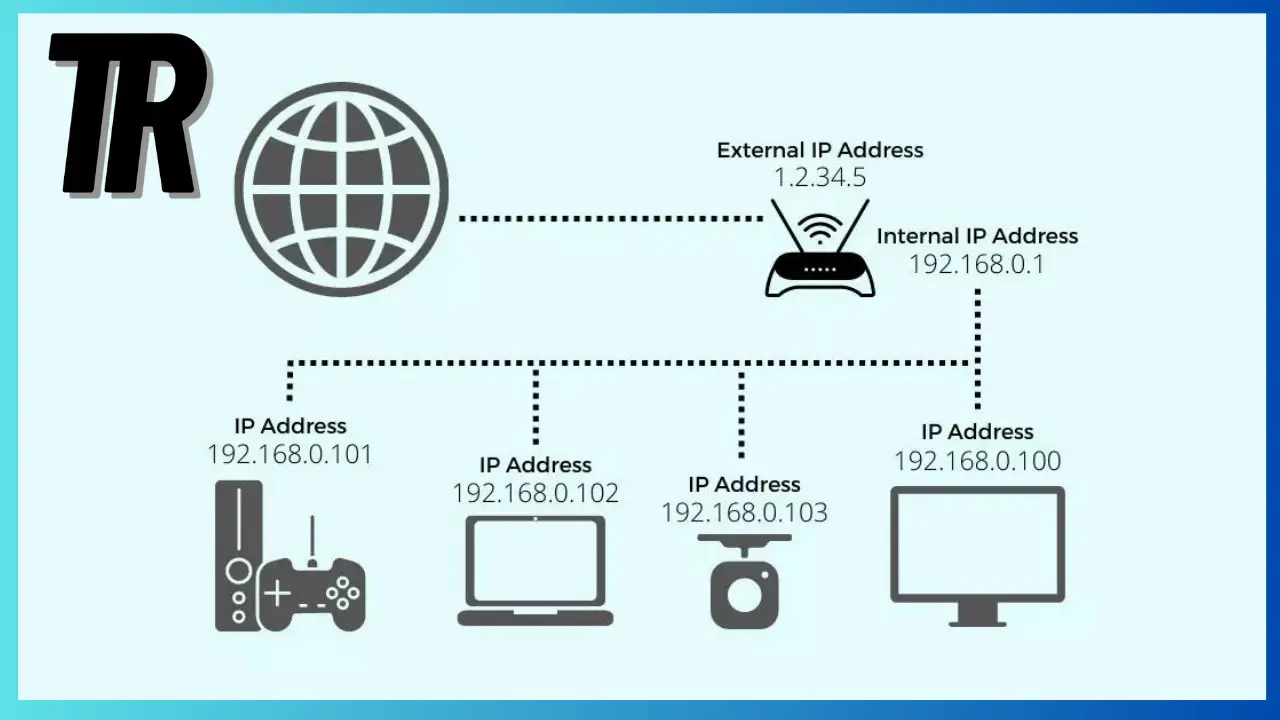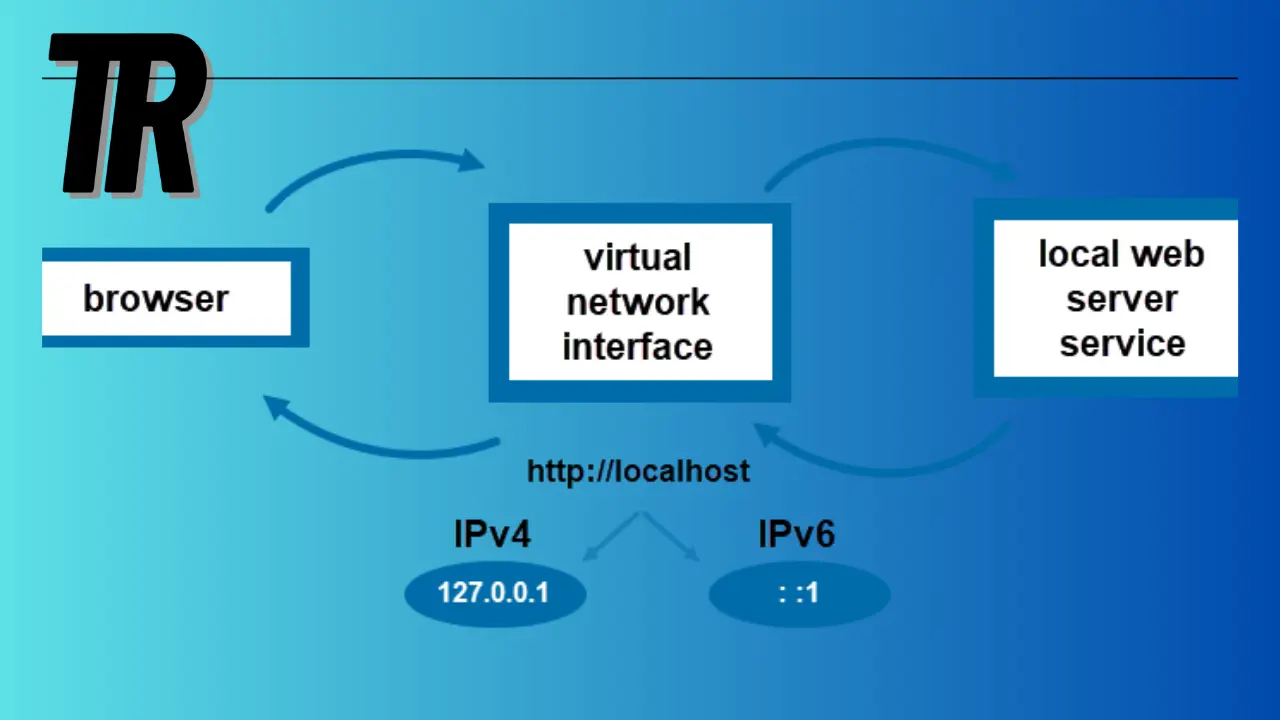Have you ever wondered what goes on behind the scenes when you’re developing and testing software on your computer? One crucial element in this process is the use of specific IP addresses and port numbers, like 127.0.0.1:49342. This combination plays a pivotal role in creating a secure and isolated environment for testing applications locally, ensuring everything runs smoothly before it goes live.
In this comprehensive guide, we’ll explore everything you need to know about 127.0.0.1:49342. From its basic definition to its practical applications in development, we’ll delve into how it works, its benefits, and potential risks. Whether you’re a seasoned developer or just starting, understanding the significance of 127.0.0.1:49342 can enhance your development workflow and improve the security and efficiency of your projects.
What is an IP Address?
An IP address, or Internet Protocol address, is a unique identifier assigned to devices connected to a network. It allows devices to communicate with each other by specifying both the sender and receiver of information packets. There are two main types of IP addresses: IPv4 and IPv6, each with its unique structure and allocation.
IPv4 and IPv6 Overview
- IPv4: The most widely used version, consisting of four octets separated by periods (e.g., 192.168.1.1). It supports approximately 4.3 billion addresses.
- IPv6: The newer version, designed to replace IPv4. It consists of eight groups of four hexadecimal digits separated by colons (e.g., 2001:0db8:85a3:0000:0000:8a2e:0370:7334), offering a vastly larger address space.
Static vs. Dynamic IP Addresses
- Static IP Addresses: These do not change and are manually assigned to a device. They are often used for servers and other critical devices.
- Dynamic IP Addresses: These are automatically assigned by a DHCP server and can change over time. They are commonly used for everyday devices like personal computers and smartphones.
The Significance of 127.0.0.1
The IP address 127.0.0.1 is known as the “localhost” or “loopback” address. It is a special address that points back to the host machine, allowing it to communicate with itself. This is particularly useful for testing and development purposes, enabling software to be run and debugged in a controlled environment without needing an external network connection.
Localhost in Software Development
- Testing: Developers use localhost to test web applications on their local machines before deploying them to a live server.
- Debugging: It helps in identifying and fixing bugs in a safe environment.
- Performance Tuning: Localhost allows developers to optimize their applications without affecting external systems.
Localhost in Network Security
- Security Testing: Localhost is used to test security measures without exposing the system to external threats.
- Firewall Configurations: It helps in configuring firewalls to block or allow traffic to specific ports.
- Access Control: Localhost testing ensures that only authorized applications can access certain resources.
Deciphering 127.0.0.1:49342
Combining 127.0.0.1 with a specific port number, such as 49342, allows for targeted communication with services running on the same machine. Ports are numerical identifiers for specific processes or services. By using 127.0.0.1:49342, developers can direct traffic to a particular application or service for testing and debugging purposes.
Role of Ports in Networking
- Port Numbers: These are used to identify specific applications or services running on a device. Common examples include port 80 for HTTP and port 443 for HTTPS.
- Port Range: Ports range from 0 to 65535, with ports 0-1023 being well-known ports for common services, and ports 1024-49151 being registered ports for specific services and applications.
- Dynamic Ports: Ports 49152-65535 are dynamic or private ports, often used for temporary communication sessions.
Specific Use of Port 49342
- Testing Environments: Port 49342 is often used in testing environments to simulate network interactions.
- Service Isolation: It helps in isolating services to ensure they do not interfere with each other.
- Debugging Specific Services: Developers can use port 49342 to debug specific services running on their local machine.
Differentiating Public and Private IP Addresses

- Public IP: Accessible over the internet and used for external communications.
- Private IP: Restricted to local network communications, not accessible from the internet.
Public IP Addresses
- Internet Access: Public IPs are essential for accessing the Internet and enabling external communications.
- Uniqueness: Each device on the internet must have a unique public IP address.
- ISP Assignment: Public IP addresses are typically assigned by Internet Service Providers (ISPs).
Private IP Addresses
- Local Networks: Private IPs are used within local networks, such as home or office networks.
- Address Ranges: Common private IP address ranges include 10.0.0.0 – 10.255.255.255, 172.16.0.0 – 172.31.255.255, and 192.168.0.0 – 192.168.255.255.
- NAT: Network Address Translation (NAT) allows multiple devices on a local network to share a single public IP address for internet access.
Exploring the Role of Port 49342
Port 49342 plays a critical role in localized networking. It is often used by applications to establish a sandboxed environment for testing, ensuring that the software can communicate internally without interfering with external systems. This isolation is vital for debugging and performance optimization.
Isolated Testing Environments
- Software Testing: Port 49342 allows developers to create isolated environments for software testing.
- Network Simulations: It helps simulate network interactions between different software components.
- Performance Metrics: Developers can measure performance metrics without external interference.
Security Implications
- Access Control: Ensures only authorized applications can access specific ports.
- Firewall Rules: Helps in configuring firewall rules to allow or block traffic.
- Intrusion Detection: Monitors for unauthorized access attempts.
Practical Applications of 127.0.0.1:49342
- Software Development: Developers use 127.0.0.1:49342 to create controlled environments for testing new applications and services. This setup helps in identifying bugs and performance issues in a safe, isolated environment.
- Network Testing: It allows for the simulation of network interactions between different software components, facilitating thorough testing without external dependencies.
- Educational Purposes: For students and new developers, 127.0.0.1:49342 provides a practical way to learn about networking concepts and client-server interactions in a secure setting.
Benefits for Developers
- Bug Identification: Helps identify and fix bugs in a controlled environment.
- Performance Testing: Allows for thorough performance testing and optimization.
- Learning Tool: Serves as an educational tool for new developers.
Network Testing Scenarios
- Client-Server Testing: Simulates client-server interactions within a local environment.
- API Testing: Tests APIs without the need for external servers.
- Load Testing: Measures how applications handle high traffic volumes.
Educational Use Cases
- Learning Networking Basics: Provides a practical way to learn networking fundamentals.
- Simulating Real-World Scenarios: Allows students to simulate real-world networking scenarios.
- Safe Learning Environment: Offers a safe environment for learning and experimentation.
Execution of Localhost Functions

To utilize 127.0.0.1:49342 effectively, follow these steps:
- Install Server Software: Set up Nginx, Apache, or IIS on your local machine.
- Configure the Server: Adjust server configuration files to accept connections on port 49342.
- Verify Setup: Access the server through 127.0.0.1:49342 to ensure proper configuration.
Installing Server Software
- Nginx: A popular web server that is easy to install and configure.
- Apache: Another widely used web server with extensive documentation.
- IIS: A web server from Microsoft, commonly used in Windows environments.
Configuring the Server
- Configuration Files: Adjust configuration files to specify the use of port 49342.
- Access Controls: Implement access controls to restrict access to the local host.
- Testing the Configuration: Verify the configuration by accessing the server through 127.0.0.1:49342.
Verification Steps
- Browser Access: Access the server through a web browser to ensure it is running correctly.
- Command Line Tools: Use command line tools like Telnet or Curl to test connectivity.
- Server Logs: Review server logs for any errors or warnings.
Security Implications
While 127.0.0.1 and port 49342 are primarily used for local testing, security should not be overlooked. Open ports, even on local hosts, can pose security risks if not properly managed. Implementing strict access controls and regular security audits is crucial to protect against unauthorized access.
Potential Risks
Even though 127.0.0.1:49342 is primarily used for local testing, it still carries potential risks that need to be addressed. Ensuring proper security measures can mitigate these risks effectively.
Unauthorized Access
- Malicious Software: If your local environment is compromised by malware, it can exploit open ports on 127.0.0.1, leading to unauthorized access.
- Access Control: Implementing strict access control lists (ACLs) and using firewalls can help prevent unauthorized entities from accessing these ports.
Data Leakage
- Sensitive Data: Sensitive information transmitted over local hosts can be exposed if not properly encrypted.
- Encryption: Using SSL/TLS encryption for data in transit can help protect against data leakage.
Misconfiguration
- Configuration Errors: Misconfigurations in server settings can leave localhost ports exposed and vulnerable.
- Regular Audits: Regularly auditing server configurations and using automated tools to check for vulnerabilities can prevent misconfigurations.
Best Practices for Using 127.0.0.1:49342
Adhering to best practices ensures secure and efficient use of 127.0.0.1:49342 in your development and testing environments.
Secure Configuration
- Access Controls: Use robust access control mechanisms to restrict access to local host ports.
- Firewall Rules: Configure firewall rules to allow only necessary traffic to 127.0.0.1:49342.
Regular Monitoring
- Log Analysis: Regularly review server logs to detect any unauthorized access attempts or anomalies.
- Intrusion Detection Systems (IDS): Implement IDS to monitor and alert on suspicious activities targeting localhost ports.
Encryption and Authentication
- Encrypt Data: Use encryption protocols like SSL/TLS to secure data in transit.
- Authentication Mechanisms: Implement strong authentication mechanisms to verify the identity of users and applications accessing the local host.
Implementing 127.0.0.1:49342 in Development Environments
Using 127.0.0.1:49342 effectively in development environments can significantly enhance the testing and debugging processes.
Setting Up a Development Server
- Choose a Server: Decide on a server software (Nginx, Apache, or IIS) based on your project requirements.
- Installation: Follow the installation instructions for your chosen server software.
- Configuration: Configure the server to listen on port 49342 for local testing.
Developing and Testing Applications
- Local Development: Use 127.0.0.1:49342 to run and test your applications locally, ensuring they function correctly before deploying to production.
- Debugging: Debug issues in a controlled environment using the local host and specified port.
Benefits of Using 127.0.0.1:49342
Utilizing 127.0.0.1:49342 offers numerous benefits, particularly in development and testing scenarios.
Isolated Testing
- Controlled Environment: Isolate your testing environment to avoid interference from external factors.
- Accurate Testing: Conduct accurate testing of applications and services without the variability of external networks.
Performance Optimization
- Resource Utilization: Monitor and optimize resource utilization in a local environment.
- Load Testing: Perform load testing to determine how your application handles high-traffic volumes.
Learning and Development
- Educational Tool: Use localhost and specific ports for learning networking and development fundamentals.
- Experimentation: Safely experiment with new technologies and configurations without affecting production systems.
Troubleshooting Common Issues
When working with 127.0.0.1:49342, developers may encounter various issues. Here’s how to troubleshoot some common problems.
Connection Refused
- Server Not Running: Ensure the server is running and listening on port 49342.
- Firewall Restrictions: Check firewall settings to ensure they are not blocking access to the port.
Port Conflicts
- Port in Use: Verify that port 49342 is not being used by another application.
- Change Port: If necessary, change the port number in the server configuration to avoid conflicts.
Conclusion
The IP address 127.0.0.1:49342 is a powerful tool in the world of software development and networking. By understanding its significance, implementing best practices, and securing your configurations, you can leverage this address and port combination to enhance your development, testing, and learning experiences. Whether you are isolating testing environments, optimizing performance, or learning networking basics, 127.0.0.1:49342 offers a controlled and secure environment to achieve your goals.
FAQ
What is 127.0.0.1:49342 used for?
127.0.0.1:49342 is used for local testing and development, allowing developers to run and debug applications in a controlled environment.
How do I secure 127.0.0.1:49342?
Implement access controls, configure firewall rules, and use encryption to secure 127.0.0.1:49342 from unauthorized access and data leakage.
Can I change the port number from 49342?
Yes, you can change the port number in your server configuration if port 49342 is already in use or if you want to use a different port.
What are the benefits of using 127.0.0.1:49342 for testing?
Using 127.0.0.1:49342 for testing offers benefits such as isolated testing environments, accurate performance testing, and a safe space for learning and experimentation.




